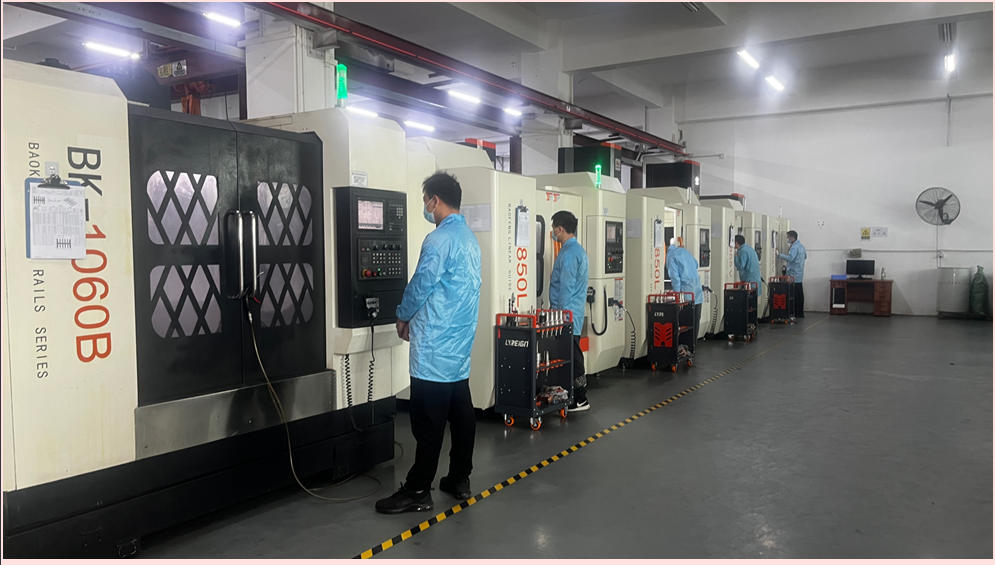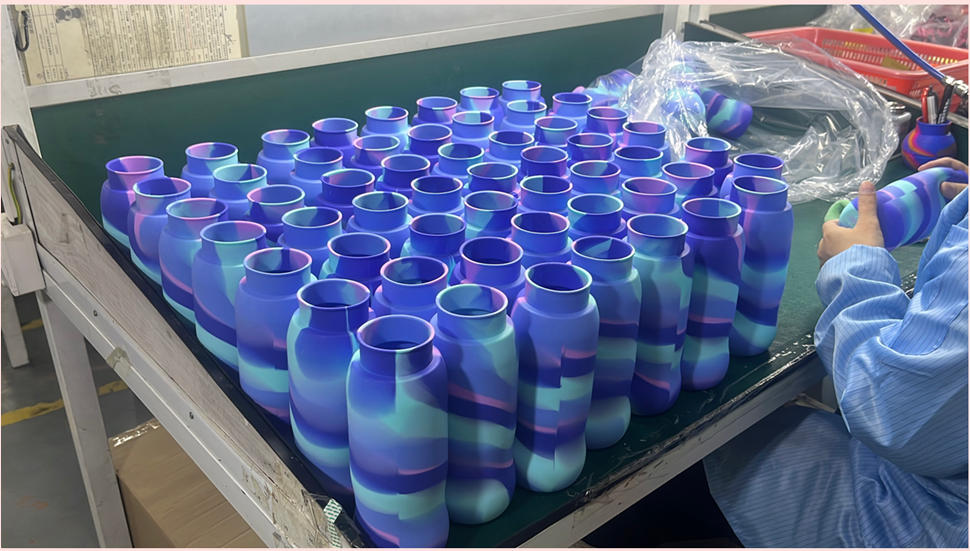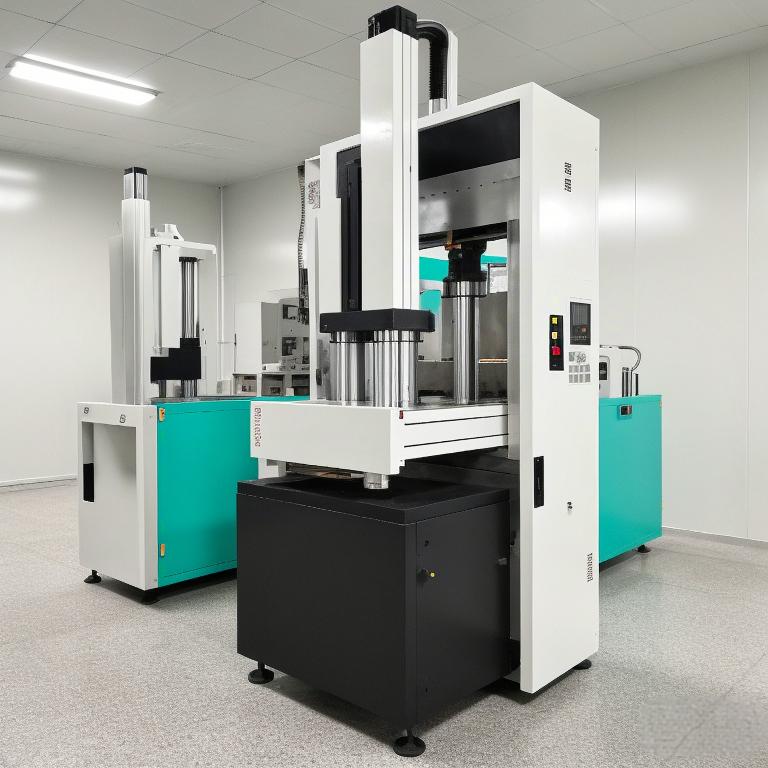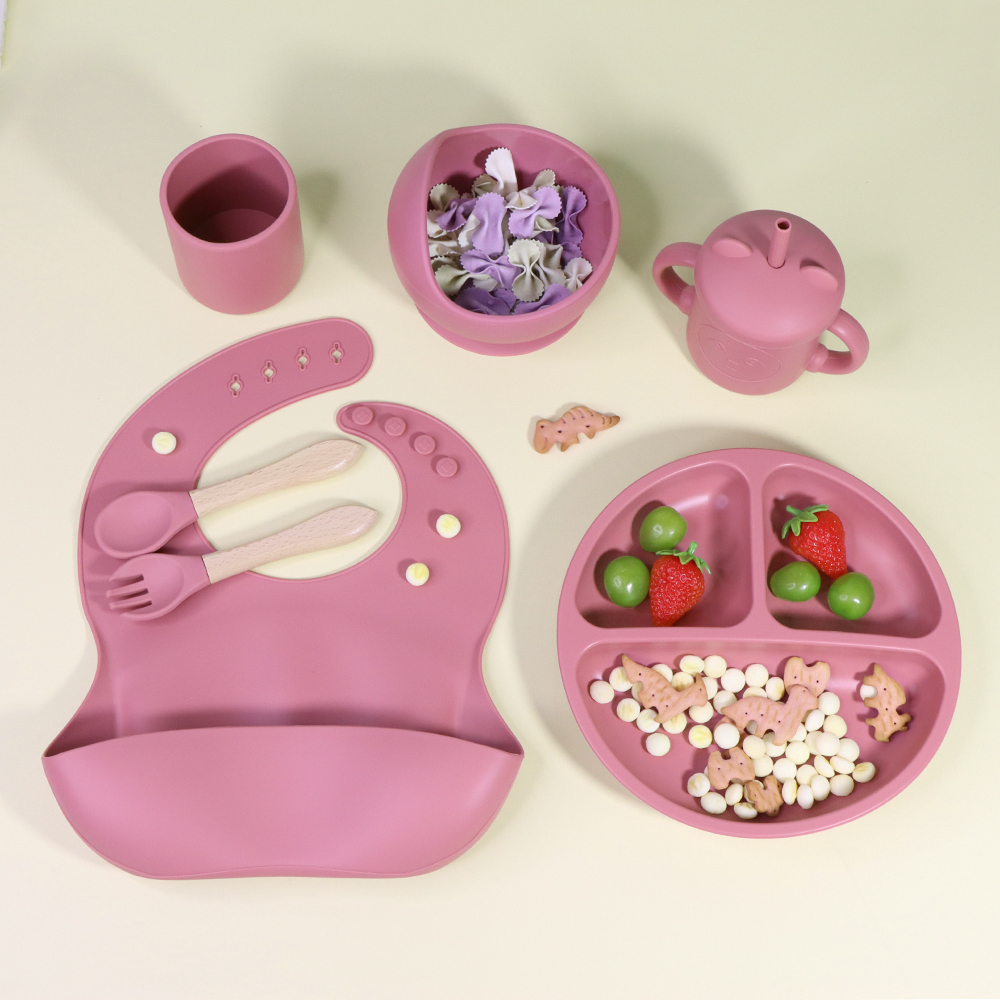Contenido
How Does Injection Molding Work?
Injection molding is a multi-step process that involves the following stages:
Preparation of Material:
In LSR injection molding, the silicone material is mixed with catalysts and curing agents. The liquid silicone mixture is prepared for injection into the mold. Unlike solid silicone, which requires heating to soften, LSR is already in liquid form at room temperature.
Injection into the Mold:
The liquid silicone rubber is injected under high pressure into a precision mold made from metal, typically aluminum or steel. The LSR injection molding machine uses a high-pressure system to force the silicone material into the mold cavities, where it will take the shape of the mold.
Curing:
The silicone material is then exposed to heat to initiate a chemical reaction, known as curing or vulcanization. During this process, the silicone polymer chains crosslink, giving the material its final strength, flexibility, and durability.
The curing process can take place within seconds to minutes, depending on the mold size and type of silicone used.
Cooling:
After curing, the mold is cooled to ensure the silicone retains its shape. Once cooled, the mold opens, and the newly formed silicone part is ejected.
Post-Processing:
Depending on the design, further processes like laser etching, coloring, or assembly may be performed to complete the product. For example, logo printing on silicone cake molds or medical devices can be done to provide brand identity.
Applications of Silicone Injection Molding
Injection molding is widely used for creating high-quality silicone products with tight tolerances. Here are some common applications:
Medical Devices:
LSR injection molding is used extensively in the medical field to produce safe, sterilizable components like catheters, surgical devices, and medical seals. The biocompatible nature of silicone makes it ideal for applications where safety is paramount.
Consumer Goods:
Silicone products such as phone cases, baby bibs, and kitchenware (e.g., silicone cake molds, ice cube trays) benefit from LSR injection molding. This method offers the precision needed to manufacture items with fine details and excellent durability.
Food & Beverage:
Liquid silicone injection molding is perfect for silicone bakeware (e.g., cake molds and chocolate molds). Its high-temperature resistance makes it ideal for baking and food storage applications.
Automotive & Electronics:
Silicone components such as seals and gaskets for vehicles or electronics are produced using silicone rubber injection molding due to the material’s ability to withstand high temperatures and environmental stresses.




Advantages of Liquid Silicone Rubber (LSR) Injection Molding
LSR injection molding offers several key advantages over traditional molding methods:
Precision and Detail:
LSR molding allows for the creation of intricate and complex designs with tight tolerances. This is particularly important for medical devices, silicone molds, and other products that require high precision.
Efficiency and Speed:
The process is highly efficient, with short cycle times due to the fast curing nature of liquid silicone rubber. This makes LSR molding suitable for mass production of silicone products.
Durability and Flexibility:
Silicone products made via injection molding are known for their long lifespan, resilience, and flexibility, making them suitable for both consumer and industrial applications.
High-Temperature Resistance:
LSR has excellent resistance to extreme temperatures, making it ideal for products used in high-temperature environments such as baking or food storage.
Why Choose LSR Injection Molding for Silicone Products?
Liquid silicone injection molding offers high precision, durability, and flexibility for a variety of applications, from chocolate molds to medical devices. Choosing the right LSR molding manufacturer ensures that your products meet industry standards for safety, quality, and performance. Manufacturers with expertise in silicone molding can offer custom solutions for unique designs, such as customized silicone baby products or personalized cake molds.
If you are looking for high-quality silicone products, Jewelives Silicone Factory provides OEM and ODM silicone molding services using advanced LSR injection molding techniques. With over 21 years of experience, we offer customized solutions for businesses across various industries.
Conclusion
Injection molding, particularly liquid silicone rubber injection molding (LSR), is a versatile and highly effective process for creating durable, high-precision silicone products. Whether you need silicone chocolate molds, cake molds, ice cube trays, or medical-grade silicone components, LSR molding provides the flexibility, strength, and quality required for high-demand applications.



